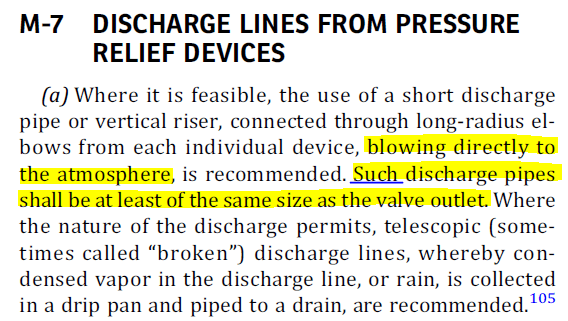Dear all,
I am working on a desalter revamp and I have a question.
The existing desalter has a 3L4 valve with a 4" outlet line discharging to the main header. The 4" line is at most 5 m long.
This PSV has to be replaced for a 4M6 valve but the outlet line has to be the same 4" line (main header can't be hot tapped so we can't make a tie-in there).
I see everyone stating that the discharge line of a PSV shall have an equal or higher diameter than PSV's outlet nozzle.
I totally understand that rule if we are dealing with compressible fluids.
However, most people seem to blindly follow that rule even when we are talking about incompressible liquids.
In this case, I would have a 6" outlet nozzle and a 4" discharge line (5 meters only) discharging to the main header.
Why can't we do this if we dealing with incompressible liquids?
Why is 4" pipe OK for inlet but it isn't for the outlet? A liquid won't expand that much so I don't really get it.
If the pressure loss is within our acceptable range, I honestly don't get why I can't do that besides "looking bad".
Can you guys please enlighten me?
Sincerely,
Pedro
I am working on a desalter revamp and I have a question.
The existing desalter has a 3L4 valve with a 4" outlet line discharging to the main header. The 4" line is at most 5 m long.
This PSV has to be replaced for a 4M6 valve but the outlet line has to be the same 4" line (main header can't be hot tapped so we can't make a tie-in there).
I see everyone stating that the discharge line of a PSV shall have an equal or higher diameter than PSV's outlet nozzle.
I totally understand that rule if we are dealing with compressible fluids.
However, most people seem to blindly follow that rule even when we are talking about incompressible liquids.
In this case, I would have a 6" outlet nozzle and a 4" discharge line (5 meters only) discharging to the main header.
Why can't we do this if we dealing with incompressible liquids?
Why is 4" pipe OK for inlet but it isn't for the outlet? A liquid won't expand that much so I don't really get it.
If the pressure loss is within our acceptable range, I honestly don't get why I can't do that besides "looking bad".
Can you guys please enlighten me?
Sincerely,
Pedro

